#Longest-reigning British monarch
Explore tagged Tumblr posts
Text
On the passing of Queen Elizabeth II
"Lillibet" a familiar voice
Whispers in my ear
Philip holds out his hand
"it's time to go my dear"
"Already Philip?" but he just smiles,
"I knew you would protest,
But you've served your country well my love, now it's time to rest".
My family are gathered around,
I know their tears are for me,
But my body has grown tired,
And now I'm finally free.
"I broke the record, 70 years,
I suppose you are quite right"
I took his hand, and walked towards the tunnel of white light.
Then I stopped for a second,
And looked upon my son,
I knew I had four more words before my time was done.
I walked up behind him, as the bells began to ring,
I gave his shoulder a squeeze,
and whispered, "God save the King".
RIP Lillibet…
Elizabeth II was Queen of the United Kingdom and other Commonwealth realms from 6 February 1952 until her death in 2022. She was queen regnant of 32 sovereign states during her lifetime and remained the monarch of 15 realms by the time of her death.
Born: April 21, 1926, Bruton Street, London, United Kingdom
Died: September 8, 2022, Balmoral Castle, United Kingdom
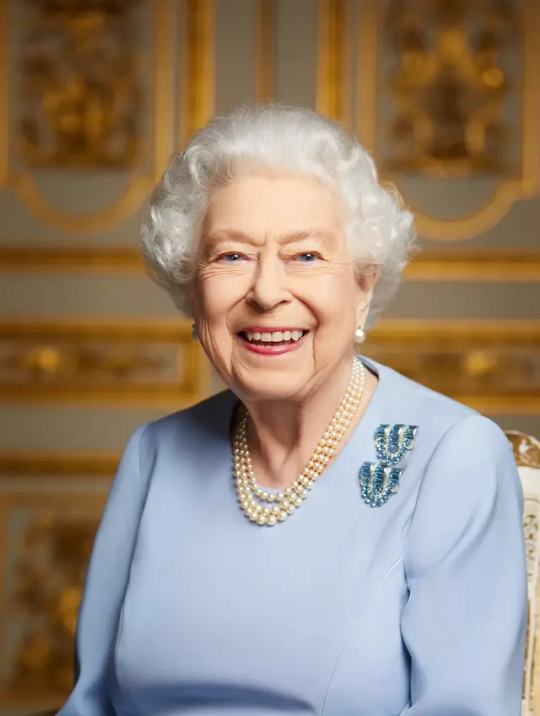
#Queen's Diamond Jubilee#Queen Elizabeth II's coronation#Queen Elizabeth II's birthday#Queen's Commonwealth Games#Windsor Castle#Royal engagements#State visits#Royal weddings#Queen's Guard#Queen Elizabeth II's speeches#Queen Elizabeth II#British monarchy#British royal family#Windsor family#Queen of the United Kingdom#Longest-reigning British monarch#Queen consort of multiple Commonwealth realms#Queen Elizabeth II's reign#Queen Elizabeth II's legacy#Buckingham Palace#today on tumblr
4 notes
·
View notes
Text

Queen Victoria, 1819 - 1901. Reigned 1837 - 1901
Artist: Alfred Edward Chalon (Swiss, 1780-1860)
Date: 1838
Medium: Watercolour on paper
Collection: National Galleries of Scotland, Edinburgh, Scotland
Description
Born at Kensington Palace, the only child of the Duke of Kent and Princess Victoria of Saxe-Coburg, Queen Victoria succeeded to the throne on the death of her uncle, William IV. Not only did she become the longest reigning British monarch but she was also the figurehead of a vast empire. In 1840 she married her cousin, Albert of Saxe-Coburg and Gotha, and their happy marriage brought forth a family of nine children. After Albert’s death she largely retired from public life and spent much of her time at Balmoral in Scotland. This delicate watercolour by Chalon was the very first portrait the young queen sat for after her accession to the throne. She is dressed in the robes she wore when Parliament was dissolved after her uncle’s death, her hat casually discarded on the floor.
#portrait#watercolour#queen victoria#british monarchy#british empire#artwork#fine art#british royal family#british history#full length#seated#chair#costume#architecture#foliage#hat#courtyard#urn#necklace#swiss culture#swiss art#alfred edward chalon#swiss painter#european art#19th century painting#national galleries of scotland
27 notes
·
View notes
Text

Queen Elizabeth II acceded to the throne #onthisday in 1952, upon the death of her father, King George VI.
She was crowned in the Abbey the following year, and went on to become the longest-reigning monarch in British history.
53 notes
·
View notes
Text
The longest reigning British monarch dying during the admin of the shortest serving British prime minister is kinda hilarious when you think about it.
124 notes
·
View notes
Text
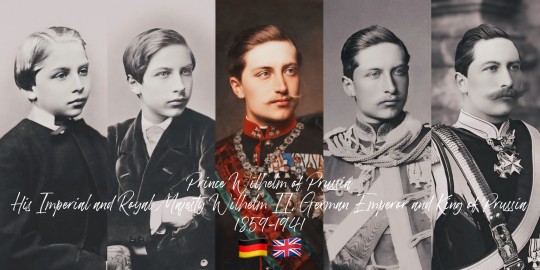


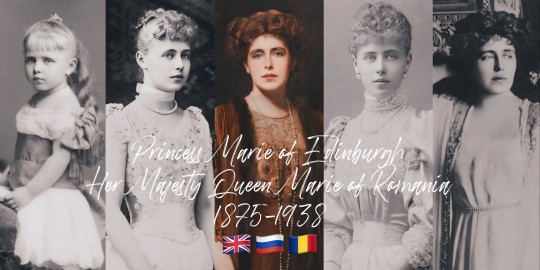


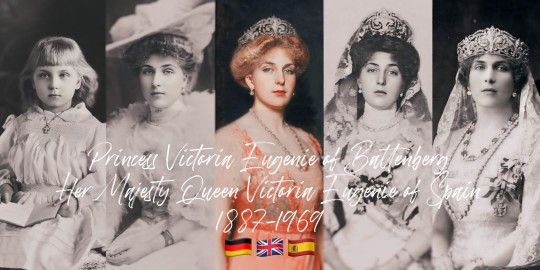

"The Monarchs of Queen Victoria’s Legacy"
Wilhelm II was the first of Queen Victoria's grandchildren to ascend to a throne, becoming German Emperor in 1888. His reign initiated the lineage of monarchs descended from Victoria. The last to be crowned was Marie of Romania in 1914, marking the end of an era for Victoria's royal progeny.
Queen Maud of Norway holds the distinction of having the longest tenure as Queen Consort among Queen Victoria's grandchildren, with a reign that spanned 33 years. Her time on the throne was characterized by a harmonious blend of British heritage and Norwegian culture, leaving a legacy of benevolence and cultural patronage. Conversely, Queen Sophia's role as Queen Consort of the Hellenes was the briefest, lasting just about 4 years due to the political upheavals of World War I and Greece's National Schism, which led to her husband's abdication. Despite the short span, her resilience and dedication to her royal duties remained unwavering.
The execution of Empress Alexandra Feodorovna was a deeply tragic event, reflecting the brutal reality of the Russian Revolution. On the night of 16-17 July 1918, she and her family were executed by Bolshevik revolutionaries in Yekaterinburg. Alexandra witnessed the murder of her husband, Tsar Nicholas II, before she herself was killed with a gunshot to the head. The violence of that night brought an abrupt and grim end to the Romanov dynasty, extinguishing the lives of the last imperial family of Russia in a stark and merciless manner. Her death marked the first among Queen Victoria’s crowned grandchildren. In contrast, Queen Victoria Eugenie of Spain lived through the upheavals of the 20th century, witnessing the restoration of the Spanish monarchy. She passed away in 1969, the last of Victoria’s crowned grandchildren, her life reflecting the dramatic changes of her time.
George V’s United Kingdom, a realm where tradition blends with modernity, continues to stand firm. The monarchy, a symbol of continuity, has weathered the storms of change, its crown passed down through generations, still reigning with a sense of duty and connection to the people.
Maud of Norway’s legacy endures in the serene beauty of Norway, where the monarchy remains a cherished institution. Her reign, characterized by a quiet strength and a nurturing presence, is remembered fondly, and the royal house she helped establish continues to flourish.
Margaret of Connaught’s Swedish monarchy, into which she married, stands resilient. Though she never became queen, her descendants uphold the traditions and values she embodied, maintaining the monarchy as a pillar of Swedish national identity.
Victoria Eugenie of Spain saw the Spanish monarchy navigate the tumultuous waters of the 20th century, enduring a republic and a dictatorship before being restored. Today, it stands as a testament to resilience, with her bloodline still on the throne, embodying the spirit of reconciliation and progress.
In stark contrast, the fates of other monarchies were marked by tragedy:
Wilhelm II witnessed the fall of his German Empire in the aftermath of World War I. His abdication marked the end of an era, and he spent his remaining years in exile, a once-mighty emperor without a throne, reflecting on the lost glory of his realm.
Sophia of Hellenes experienced the disintegration of the Kingdom of Greece amidst political upheaval. The monarchy, once a symbol of national unity, was abolished, leaving her and her family to face the harsh reality of a world that had moved beyond the age of empires.
Alexandra Feodorovna’s Russian Empire crumbled during the Bolshevik Revolution. The tragic end of the Romanov dynasty saw her and her family executed, their fates sealed by the tides of revolution that swept away centuries of monarchical rule.
Marie of Romania’s kingdom, once a beacon of hope in the aftermath of World War I, eventually succumbed to the forces of history. The monarchy was abolished after World War II, and the royal family faced the stark reality of a republic.
#wilhelm ii#Marie of Edinburgh#Marie of romania#George v#alix of hesse#alexandra feodorovna#Margaret of connaught#Margaret of Sweden#Victoria eugenie of Spain#Sophia of Prussia#Sophia of Hellenes#Sophia of greece#queen maud#princess maud of wales#Victoria eugenie of battenberg
58 notes
·
View notes
Text
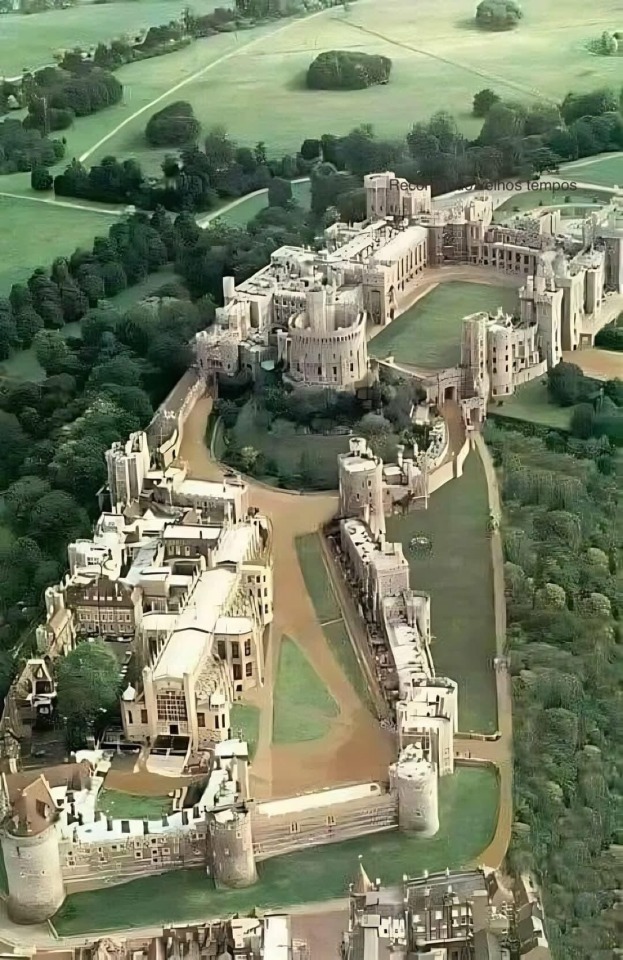
Windsor Castle is a royal residence located in the city of Windsor in Berkshire, England, United Kingdom. The building is notable for its long association with the English and British royal families and also for its architecture. The original castle was built in the 11th century, after the Norman conquest of England by William I. It has been used by monarchs since the reign of Henry I and is the longest-inhabited castle in Europe.
Their luxurious early 19th-century State Apartments are architecturally significant, described by historian Hugh Roberts as "a superb and unparalleled sequence of rooms widely regarded as the most complete expression of later Georgian taste." The castle also features the 15th-century Saint George Chapel, considered by historians as "one of the supreme achievements of English Gothic perpendicular architecture". Over five hundred people live and work at Windsor Castle.
Source: Facebook
7 notes
·
View notes
Text
Fun Fact: Charles Windsor-Mountbatten was the longest-serving heir to the throne in British/English history, being heir apparent for 52 years.
He's also currently the fifth-shortest reigning British/English monarch since William the Conqueror, at 502 days at time of posting.
He's only beating the disputed Queens Matilda (208 days) and Lady Jane Grey (9 days), 12 year old murder victim Edward V (78 days), and his abdicating grand-uncle Edward VIII (326 days).
He has to reign another 286 days to beat the next-shortest, Richard III's 788 days.
56 notes
·
View notes
Text
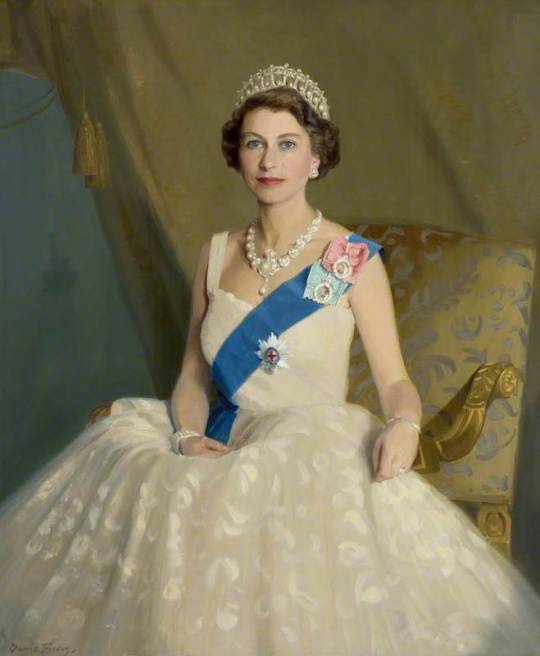
Elizabeth II 1952–1959
Denis Fildes (1889–1974)
The Royal United Services Institute for Defence and Security Studies
Queen of the United Kingdom and Commonwealth realms from 1952 to 2022. Longest reigning British monarch
4 notes
·
View notes
Text
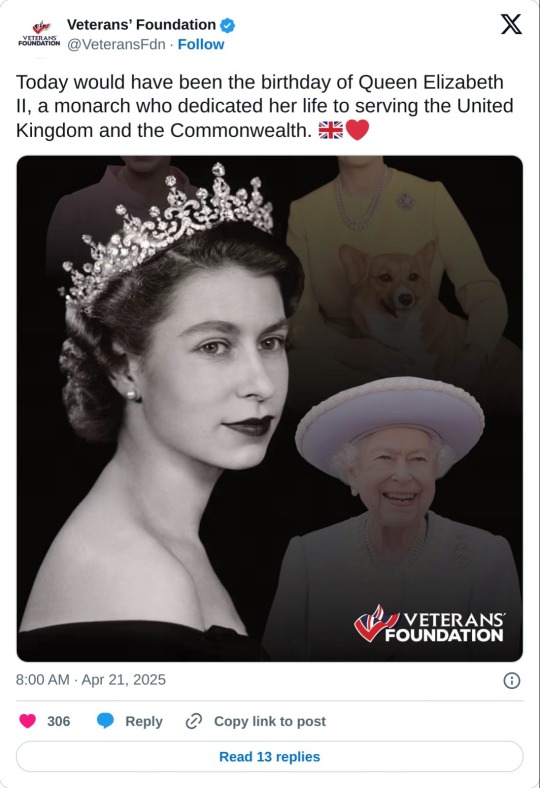
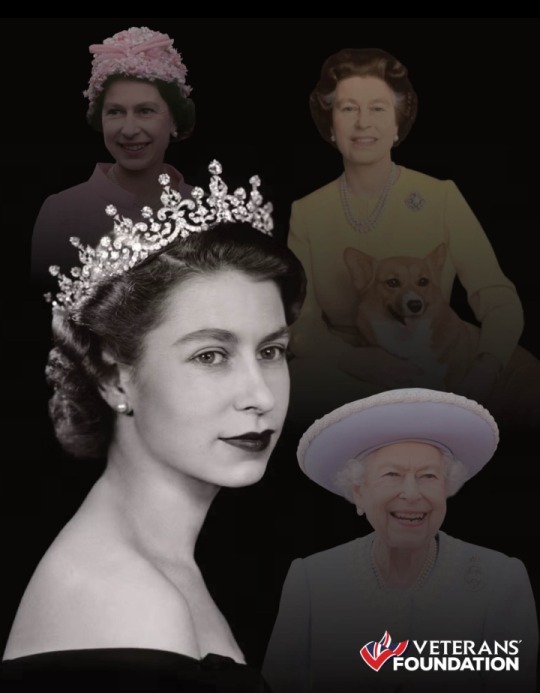
Elizabeth II (Elizabeth Alexandra Mary; 21 April 1926 – 8 September 2022) was Queen of the United Kingdom and other Commonwealth realms from 6 February 1952 until her death in 2022.
She had been queen regnant of 32 sovereign states during her lifetime and was the monarch of 15 realms at her death.
Her reign of 70 years and 214 days is the longest of any British monarch, the second-longest of any sovereign state, and the longest of any queen regnant in history.
#queen elizabeth II#british royal family#royal birthdays#birthday#born on this day#veterans' foundation
2 notes
·
View notes
Note
Can women not become Queen in Sunderland? That's pretty regressive.
Women can inherit, Zella's statement was a bit erroneous, but Sunderland operates on male preference primogeniture meaning a girl can only inherit if she has no brothers, something that hasn't happened before.
Also, I strongly resist the idea that a hereditary monarchy is somehow more progressive if there's a woman on the throne rather than a man. Queen Elizabeth II, the longest reigning female monarch, spent the last years of her life protecting her alleged rapist son from facing his victims. The last time she did a television interview here in Canada Princess Anne defended the British Empire, which is responsible for oppressing and displacing millions of women and girls around the world. The fact that anyone would consider these women feminists is beyond me.
The royal women who I do consider feminists—Meghan Markle, Queen Mary of Denmark, Diana, Rania of Jordan etc.—either had that reputation before marrying their husbands or had to actively fight against the royal institution to do things their own way. And they put years and years and years into actually doing proper activism.
In my story, if Louis was Louise how would that better anything in my story? Would the family be any less dysfunctional, would Sunderland be a more equitable country? The answer to all of this is no because the women in my story are often just as misogynistic and regressive as the men.
10 notes
·
View notes
Note
Are there any influential royal women that really shaped the monarchy?
Well we've had multiple queens, including our two longest reigning monarchs who between them led Britain for over 130 of the last 200 years, so yes of course. Every single person in the line of succession today has to claim descent from a woman, Sophia of Hanover. The British Empire has its roots in the reign of Elizabeth I which, while obviously not a great thing on reflection, undoubtedly shaped the monarchy for better or worse. The Church of England of which our monarch is still head was formed in part because of Anne Boleyn. It was Queen Anne who signed the Act of Union which formed Great Britain and was an active part of negotiations.
Monarchy is an old old system which relies on family and blood to survive: marriages, children etc. Even women largely lost to history will all have shaped the monarchy in some way because they're necessary for its continuation. But women have always served as regents, they've built armies, they've advised and influenced those in power, they've been emblems of their nations.
26 notes
·
View notes
Text

Queen Elizabeth II in Coronation Robes
Artist: Herbert James Gunn (Scottish, 1893–1964)
Date: c. 1953-1956
Medium: Oil on canvas
Collection: Royal Collection Trust, London, United Kingdom
Elizabeth II
Elizabeth II (Elizabeth Alexandra Mary; 21 April 1926 – 8 September 2022) was Queen of the United Kingdom and other Commonwealth realms from 6 February 1952 until her death in 2022. She had been queen regnant of 32 sovereign states during her lifetime and was the monarch of 15 realms at her death. Her reign of 70 years and 214 days is the longest of any British monarch, the second-longest of any sovereign state, and the longest of any queen regnant in history.
#portrait#full length#coronation robes#royal chair#tiara#royal crown#white gown with embroidery#ornate table#scepter#cape#jewelry#oil on canvas#olive green curtains#painting#fine art#artwork#oil painting#queen elizabeth ii#queen of the united kingdom#british royal family#british empre#british monarchy#british history#princess elizabeth of york#house of windsor#european art#scottish culture#scottish art#herbert james gunn#scottish pain ter
53 notes
·
View notes
Text
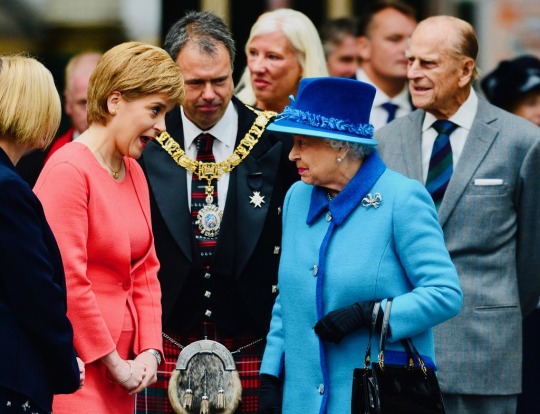
9 September 2015 | Queen Elizabeth II meets First Minister Nicola Sturgeon at Waverley Station before boarding the steam locomotive 'Union of South Africa' in Edinburgh, Scotland. Today, Her Majesty Queen Elizabeth II becomes the longest reigning monarch in British history overtaking her great-great grandmother Queen Victoria's record by one day. The Queen has reigned for a total of 63 years and 217 days. Accompanied by her husband The Duke of Edinburgh, she has today opened the new Scottish Border's Railway. (c) Mark Runnacles/Getty Images
2 notes
·
View notes
Text
So uh… the king of England has cancer.
Gonna be honest, I don’t care? Which sounds odd but if he does die there will be a lot of money spent on his funeral and then the next coronation and I don’t think that’s for the best with all the economic issues we have over here. Also I’ve never been a strong monarchist. I’m not wishing death on him, but I’ve never been a fan of wishing death on anyone even as a joke.
Plus even if he dies… he’s in his 70s. Like I think that’s a good time to go.
I will say though, if he does die without getting any money printed with him on it, it would be a bit funny. Also the irony of him dying not even a year into his reign while his mother was the longest serving British monarch.
But yeah if you ask me my thoughts, I’d say that I don’t really care too much. Yeah he’s my monarch, but I don’t really care.
#con(versation)#british royal family#king charles iii#cw cancer#cw death#yes I am British; yes I am sorry
9 notes
·
View notes
Text
Top 10 Best Historical Coins for Collectors
The world of historical coin collecting is a fascinating intersection of art, history, and investment. Each coin carries with it the story of the era it represents, whether it's from ancient civilizations, significant historical events, or minted during the reign of great rulers. Collectors in the luxury niche appreciate historical coins not only for their beauty and rarity but also for their intrinsic value as pieces of world history. In this blog, we explore the top 10 best historical coins for collectors, delving into their backgrounds, rarity, and why they continue to captivate collectors.
1. Athenian Owl Tetradrachm (Circa 440 BC)
The Athenian Owl Tetradrachm is one of the most iconic coins from ancient Greece, recognized by its detailed depiction of an owl, the symbol of Athena, the goddess of wisdom. Minted in silver, this coin was used as currency throughout the ancient Greek world and remains one of the most collectible ancient coins today. Collectors prize the Tetradrachm for its symbolism and craftsmanship. Its strong association with the golden age of Athens and its link to the birthplace of democracy make it a standout in any collection. Depending on its condition, an Athenian Owl Tetradrachm can fetch prices ranging from $1,000 to over $20,000.
2. Roman Denarius of Julius Caesar (Circa 44 BC)
Coins featuring Julius Caesar hold immense historical significance, particularly the Roman Denarius issued during his reign. This coin, minted just before his assassination in 44 BC, features a portrait of Caesar on one side and various Roman symbols on the reverse. It is one of the earliest examples of a living ruler being depicted on currency, marking a critical shift in Roman coinage. Collectors of ancient coins are drawn to the Roman Denarius for its rarity and its direct connection to one of history’s most famous figures. Prices for Julius Caesar Denarii vary but can reach into the tens of thousands of dollars, especially for well-preserved pieces.

3. St. Gaudens Double Eagle (1907-1933)
The St. Gaudens Double Eagle is often regarded as one of the most beautiful coins ever produced by the United States Mint. Designed by the famous sculptor Augustus Saint-Gaudens, the coin features a striking depiction of Lady Liberty striding forward with a torch and an olive branch, symbolizing enlightenment and peace. These $20 gold coins were minted from 1907 to 1933, with certain rare editions, like the 1933 Double Eagle, becoming extremely valuable. One 1933 Double Eagle sold for over $7 million at auction, making it one of the most expensive coins in the world. Collectors appreciate the Double Eagle for its beauty, historical significance, and rarity.
4. Spanish 8 Escudo "Gold Doubloon" (Late 16th to 19th Century)
The Spanish 8 Escudo, also known as the "gold doubloon," is one of the most famous coins from the Age of Exploration. Minted in the Spanish colonies, these large gold coins were used extensively in trade and became synonymous with pirate treasure. Their historical connection to the Spanish Empire, the wealth of the New World, and the era of maritime exploration make them highly sought after by collectors. Gold doubloons are valued based on their condition, minting date, and rarity, with well-preserved examples selling for upwards of $10,000 or more.
5. British Gold Sovereign (1817-Present)
The British Gold Sovereign is one of the longest-running coinage series in history, with its roots stretching back to 1817. Featuring the profile of the reigning British monarch on one side and the iconic image of St. George slaying the dragon on the other, the gold sovereign has remained a symbol of British stability and power. Collectors are particularly interested in rare or early sovereigns, such as those minted during the reign of Queen Victoria or George III. While modern gold sovereigns are still produced today, the older and rarer ones can fetch thousands of dollars at auction, especially those from limited mintages or special issues.
6. Morgan Silver Dollar (1878-1904, 1921)
The Morgan Silver Dollar is an American classic and a favorite among coin collectors for its historical value and beautiful design. Minted during the late 19th and early 20th centuries, it features a portrait of Lady Liberty on one side and an eagle on the reverse. Named after its designer, George T. Morgan, this silver dollar is particularly prized for its large size, high silver content, and its place in American history during the post-Civil War era and the westward expansion. Collectors particularly seek rare mint marks, such as those from the Carson City Mint, with prices for these rarities reaching into the thousands.
7. 1794 Flowing Hair Silver Dollar
Considered one of the most valuable American coins, the 1794 Flowing Hair Silver Dollar was the first silver dollar ever struck by the United States Mint. The coin features a portrait of Lady Liberty with flowing hair on the obverse and an eagle surrounded by a wreath on the reverse. With fewer than 200 known to exist, this coin is exceedingly rare, and its historical significance makes it one of the most desirable coins for collectors. In 2013, a 1794 Flowing Hair Silver Dollar sold for a record-breaking $10 million, highlighting its value as a key piece of American numismatic history.
8. Ducat of the Dutch Republic (Late 16th to Early 18th Century)
The Dutch Ducat is one of the most famous gold coins from Europe, minted from the late 16th century through the early 18th century. It became widely accepted in international trade and is known for its high gold content and consistent quality. The ducat often featured a knight holding a sword and a bundle of arrows, symbolizing strength and unity. Collectors are drawn to these coins not only for their historical value but also for their connection to the Dutch Republic’s period of economic and military power. Prices for well-preserved Dutch ducats can range from $2,000 to $10,000.
9. Chinese Yuan Shih-kai Silver Dollar (1914-1928)
Also known as the "Fat Man" Dollar, the Chinese Yuan Shih-kai Silver Dollar is one of the most iconic coins from early 20th-century China. The coin features a portrait of Yuan Shih-kai, the first president of the Republic of China, making it a significant piece of Chinese history. These silver dollars were heavily circulated, but high-quality examples are becoming increasingly rare and valuable. Collectors of Asian coins appreciate the historical context of the Yuan Shih-kai dollar, and prices for these coins have steadily risen in recent years, with top-grade examples selling for thousands of dollars.
10. Constantine the Great Solidus (Circa 4th Century AD)
The Constantine the Great Solidus is one of the most valuable coins from the Roman Empire, minted during the reign of Emperor Constantine in the 4th century AD. This gold coin symbolizes the transition of Rome into a Christian empire and Constantine’s significant role in shaping European history. The solidus remained the standard for gold coinage in the Byzantine Empire for centuries, and collectors are drawn to its historical importance and the fact that many of these coins have survived in excellent condition. Prices for Constantine solidus coins can range from $5,000 to over $20,000, depending on their rarity and condition.
A spokesperson from Coveted, a premier platform for collectible connoisseurs, shared their thoughts on the allure of historical coins for collectors. “Coins are tangible pieces of history, each telling its own story of the time and place it was minted. From ancient Greek coins to American classics, collectors today are not just purchasing metal, they’re investing in history. At Coveted, we help connect collectors with rare and historically significant coins, ensuring that these treasures are passed down through generations. Owning a rare coin is like holding a piece of the past in your hands, and it’s a truly rewarding experience.”
#Historical Coins#Coin Collecting#Ancient Coins#Rare Coins#Athenian Owl Tetradrachm#Roman Denarius#Julius Caesar#St. Gaudens Double Eagle#Gold Coins#Numismatics#Coin Investment#Collectible Coins#Antique Coins#Roman Coins#Greek Coins#American Coins#Luxury Collectibles#Coin Auctions#Coin History#Valuable Coins
3 notes
·
View notes
Text
Hello, welcome to my blog!
Here, I write mostly about Holy Rome from Hetalia, and if you are curious about my thoughts on him, then feel free to message me or leave a comment on one of my posts :) I love talking about him, whether the young, old, or female him. But I personally love portraying him as older and female. Despite that, I write non-ship posts about HRE as male because it is his canon gender.
I enjoy (Female/Male) HRE/HRE!Germany with different characters, either platonically, romantically, or both:
England - Hanoverian Dynasty - nominal vassalage - "death throes of one empire and the bloody baptism of the next" (Bartimaeus Sequence)
France - the Frankish Kingdom - "i wanted you dead, but now that you're gone, i want you to come back"
Papal States - Investiture Controversy - the sun and the moon - two swords- "YOu CanT DePoSED ME Im THe-"
Czechia - Kingdom of Bohemia - mistress/handmaiden trope - Czech Empire (Bartimaeus Sequence)
America - golden pair - very powerful at such a young age - self-proclaimed heroes
Spain - "the empire where the sun never sets" of Charles V
Austria - Habsburg Dynasty - longest reigning monarch of the Holy Roman Empire
Prussia - a German hospital and military order - Brandenburg-Prussia
Portugal - a friend of a friend who is maybe in love
Hungary - women with princes in distress to save ⚔
Romano - Kingdom of Sicily - Stupor Mundi
Ottoman Empire - insert Reichskrieg DVD
Italy - first love dies or never dies
Saxony - Ottonian Dynasty - East Francia
Bavaria - "BIG BROTHER CHAMPIONSHIP"
Francia - Carolingian Dynasty - father and child
Hanover - divided loyalty (Half British, Half German)
Hesse - New World's traveling partners
Talking about the "HRE is Germany theory," I think Hima leans towards this theory more than not, but I hope that he would remain vague about it to please everyone. Personally, I don't want him to be Germany in canon because the Holy Roman Empire had historical differences with Germany that I feel would be overshadowed if the two ended up being the same person. I also have my own interpretation of the character, which does not align with how I interpret Germany. But I deeply deeply love using the theory for narrative purposes, and I think HRE!Germany without amnesia would be different than with.
P.S. I reblog other content than Hetalia.
#hetalia#hws holy roman empire#nyo holy roman empire#hreeng#holypapal#holyczech#probably gonna edit this
4 notes
·
View notes